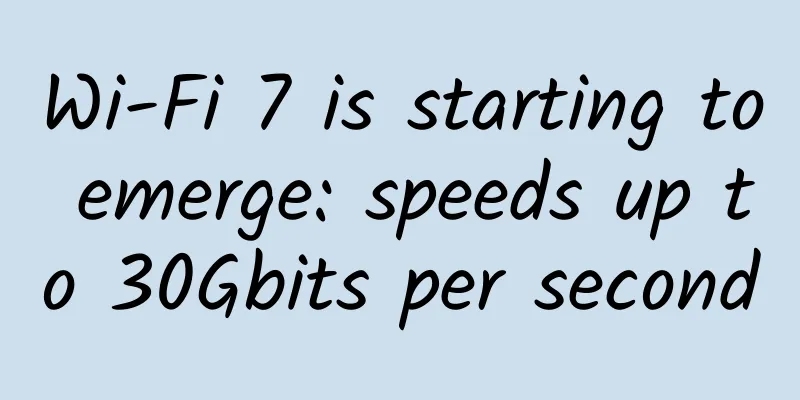Transmission technology has made a great leap forward! The IoT market will exceed one trillion this year

|
Multiple IoT transmission technologies have been put into commercial use. Market research firm IDC predicts that the global IoT market will exceed US$900 billion in 2017. Three years later, the market size will double to US$1.46 trillion. In the next three years, the number of IoT devices worldwide will reach 30 billion. According to market research firm IDC, the global IoT market will enter a growth explosion period in the next three years, reaching a scale of 1.46 trillion US dollars. The number of IoT devices worldwide will also increase dramatically, from 12.1 billion to 30 billion in five years. Cisco's Global Cloud Index Report also shows that the amount of data transmitted by IoT devices that cloud data centers around the world need to process each year will increase significantly, from 145 ZB (1 ZB is equivalent to 10 to the 9th power of TB) in 2015 to 600 ZB in 2020, which is a four-fold increase in five years.
Market research firm IDC predicts that the global IoT market will exceed $930 billion in 2017, an increase of $100 billion over last year, and has a chance to break $1 trillion this year. Three years later, the market is expected to reach a period of explosive growth in applications, and the scale will double to $1.46 trillion. The number of IoT devices worldwide is growing even faster, and will triple in five years. In 2015, the number of IoT devices worldwide reached 12.1 billion, and will surpass mobile phones next year. In the next three years, the total number of IoT devices worldwide will reach 30 billion. This year, more and more global companies will start to introduce IoT applications. IDC surveyed more than 4,500 companies in 25 countries around the world. 30% of them had introduced IoT last year, and 43%, or nearly 2,000 companies that have not yet introduced, intend to adopt it in 2017. If the companies that have already adopted it are included, the proportion of global companies adopting IoT this year will exceed 70%. The transmission capacity of the Internet of Things will also see new progress this year. The cellular narrowband wireless network technology NB-IoT, which is being promoted by many large telecom operators, will begin commercial use this year. At the same time, many large multinational telecom operators such as the United States, South Korea and Japan are scrambling to complete 5G commercial testing in advance this year in order to quickly establish a backbone network that can support tens of billions of IoT applications. In addition, more new IoT devices that support Bluetooth 5 will be launched this year, which will inevitably become a key to whether enterprise IoT applications can grow rapidly in 2017. Edge computing will be another highly anticipated change in the evolution of IoT applications this year. According to an IDC survey, 40% of enterprises have added edge computing capabilities to the front-end of IoT devices such as gateways last year. As more and more enterprises turn IoT into a key internal application and begin to deploy it in large quantities, when the amount of data is too large to be processed by the back-end, it is foreseeable that the proportion of enterprises introducing edge computing will increase significantly this year. When more computing and analysis work will be concentrated on the front-end processing, IoT devices will become smarter. From the perspective of industry, the key application industry of the Internet of Things this year will be the Internet of Vehicles. Qualcomm bought the world's leading automotive chip NXP, and Japan's SoftBank spent tens of billions of dollars to acquire ARM to attack the Internet of Vehicles. Even Intel, which dominates the server market, has established a self-driving car department to develop self-driving car hardware outside the data center. As the largest application of the Internet of Vehicles, more traditional car manufacturers and network or technology companies have formed cross-industry alliances to shorten the commercialization schedule of self-driving cars last year. The car itself is a large-scale Internet of Things device. The booming Internet of Vehicles last year also reflects that this year will drive the growth of the demand for the Internet of Things. The Internet of Things will also see the emergence of new cross-border integrated applications this year. Augmented reality (AR) and virtual reality (VR) have become new application scenarios for the Internet of Things, especially in the manufacturing industry. Companies that have introduced Internet of Things applications earlier have begun to use mature AR and VR technologies to accelerate the transformation of modern factories into smart factories. IDC predicts that in 2017, 30 of the world's top 100 manufacturers will introduce AR in their smart factories, and General Motors, a global manufacturing leader, is one of them. As more and more affordable VR and AR headsets are launched this year, they will also be used in more Internet of Things application scenarios, becoming a new force to help the growth of Internet of Things applications. |
<<: China's optical network system spending slowed down in Q3
>>: The greater development of 5G lies in industrial applications
Recommend
Why is NB-IoT, which once "firmly sat" at the top of the low-power Internet of Things, now frequently "questioned"?
With the advent of the Internet of Things era, th...
Home Wi-Fi Routers and Extenders Market to Reach $18 Billion by 2030
[[420910]] Market Introduction Market research fi...
State Council: Promote broadband "speed increase and fee reduction" to improve people's "sense of gain"
The State Council Executive Meeting reviewed and ...
The industry's first! Xinhua Sanxun launches the intrinsically safe 10G industrial Ethernet switch
Recently, New H3C Group, a subsidiary of Tsinghua...
iWebFusion dedicated server special promotion starting from $45/month, 5 data centers including Los Angeles are available
iWebFusion (iWFHosting) is still selling Clearanc...
Inspur Networks launches new data center products to build up new potential
In recent years, with the rapid development of in...
5G indoor coverage poses problems for office buildings and operators
It’s no secret that 5G cellular is coming, but mo...
When will the price of NB-IoT modules drop below 20 yuan?
The cost of NB-IoT, especially the module cost, h...
What issues should be paid attention to in the construction of office integrated network cabling?
The integrated wiring of the office will definite...
The global 5G base station market will reach US$236.98 billion in 2026
According to the new research report "Applic...
RTE2022 will open on November 1st. Agora releases the first professional book in the RTE industry, "Real-time Vientiane"
On October 27, the RTE 2022 Real-time Internet Co...
Understand in one article: website, URL, domain name, IP address, DNS, domain name resolution
Today, I will give you a long article about web a...
The United States announced to the world that it would no longer force China's three major operators, but British companies rose to the challenge
On the last day of last month, the New York Stock...
Maxthon Hosting: Hong Kong CN2/CN2 High Defense/Korea CN2/Germany/Netherlands CU2VIP/Los Angeles CN2 GIA monthly payment starting from 54 yuan
It has been a long time since I shared informatio...
5G is here—what’s next?
As 5G standards are finalized and 5G-enabled devi...







![[6.18] V5.NET 20% off monthly payment for all independent servers, 30% off for specific models in Tsuen Wan, Hong Kong](/upload/images/67cabe8732fca.webp)

